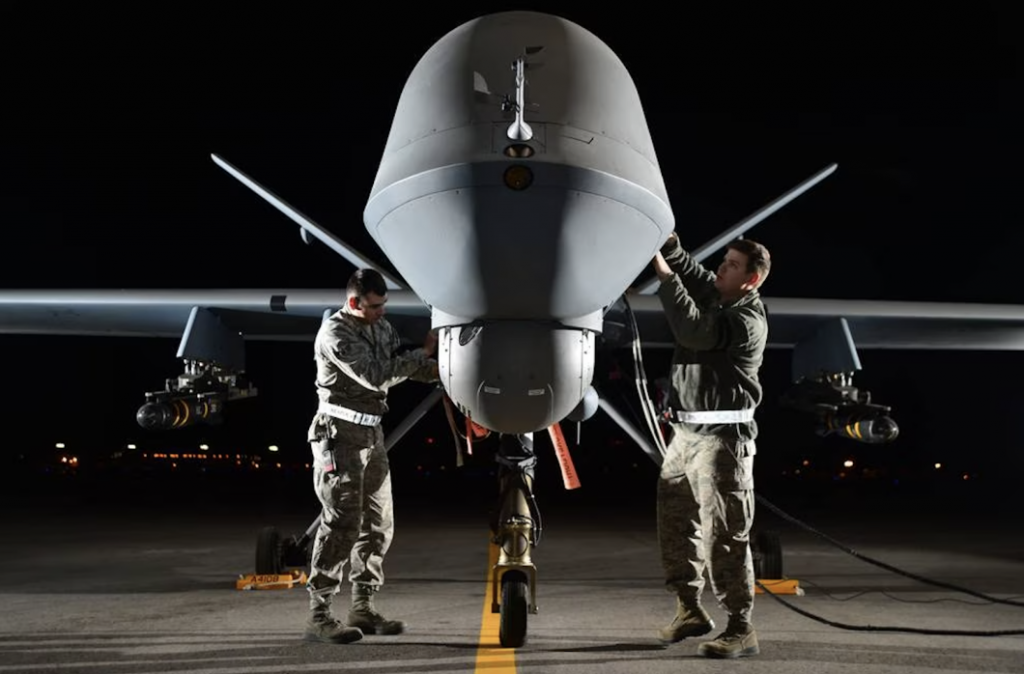
By: Rachel Crabtree
It may come as a surprise that drones were originally developed by the United States military to assist in surveillance during the Vietnam war.1 Now in the 21st century, drones evolved to have deadlier capabilities.2 The United States military now uses tens of thousands armed drones as a part of modern warfare.
An obvious advantage of using drones is that it allows militaries to conduct strikes that prevent them from having boots on the ground and risking the lifes of their soldiers. The ramifications of this transformation and wide use of drones raise questions in international humanitarian law. What rules apply to armed drones and who is accountable if things go wrong?
International humanitarian law, sometimes referred to as the “rules of war,” governs countries actions during armed conflicts.3 While this body of law does not expressly limit or prohibit the use of armed drones, it does apply general rules.4 Broadly, the law requires three things. First, the parties must target the opponent’s military, limiting civilian casualties or damage to civilian infrastructure.5 Second, the rules require that the military act within reason, not excessively.6 Third, there must be precautions to ensure that rules one and two are satisfied. The military’s ability to control and conduct strikes remotely does not change or bend the rules of war.7 The law views armed drones as any other weapon.8
A critical aspect of international humanitarian law is who is held accountable. Even though the operator of armed drones is thousands of miles away from the conflict this does not affect or reduce accountability.9 The operators and their chain of command are still accountable for potential negative effects from their use.10 Accountability persists regardless of the location of who is in control.
Even though armed drones have shaped modern warfare, the law has not expanded to explicitly control their use or applied specific rules. This balancing act of following the rules of war and appropriate use of drones will continue to be an issue as drones become more integrated into military application.
Citations
- Kashyap Vyas, A brief history of drones: From pilotless balloons to roaming killers, Interesting Enginering (Apr. 18, 2023), https://interestingengineering.com/innovation/a-brief-history-of-drones-the-remote-controlled-unmanned-aerial-vehicles-uavs.
- Id.
- The use of armed drones must comply with laws, International Committee of the Red Cross (Mar. 10, 203), https://www.icrc.org/en/doc/resources/documents/interview/2013/05-10-drone-weapons-ihl.htm
- Filip Noubel, Drone warfare: Can international humanitarian law catch up with the technology?, Global Voices (Mar. 30, 2022), https://globalvoices.org/2022/03/30/drone-warfare-can-international-humanitarian-law-catch-up-with-the-technology/#:~:text=There%20is%20no%20provision%20in,law%20in%20times%20of%20war
- Sandra Krähenmann, Humanitarian concerns raised by the use of armed drones, ReliefWeb (Jun. 16, 2020), https://reliefweb.int/report/world/humanitarian-concerns-raised-use-armed-drones.
- Id.
- Id.
- Id.
- Supra note 3.
- Id.
